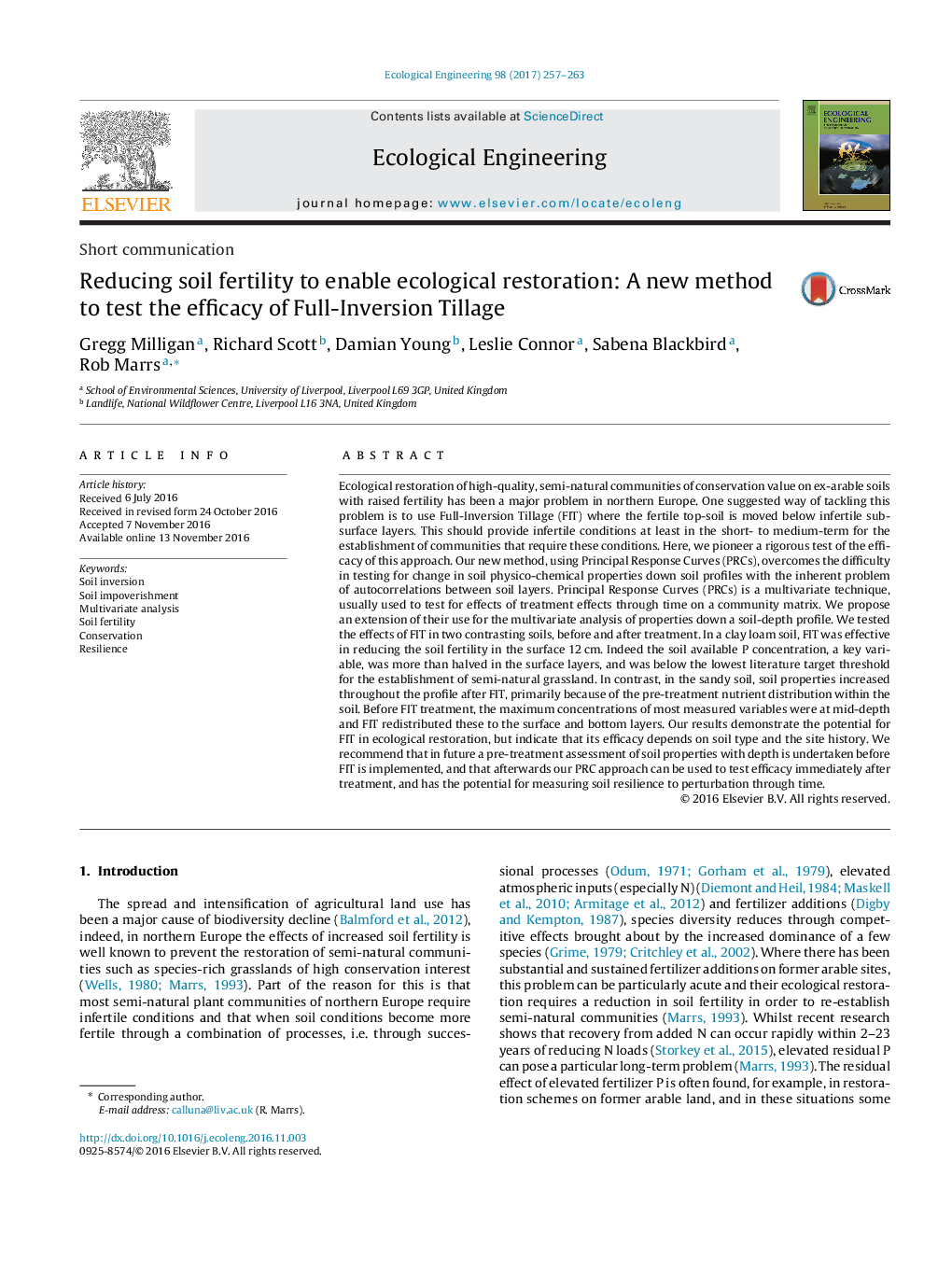| کد مقاله | کد نشریه | سال انتشار | مقاله انگلیسی | نسخه تمام متن |
|---|---|---|---|---|
| 5744076 | 1618001 | 2017 | 7 صفحه PDF | دانلود رایگان |
- Soil impoverishment is often needed when restoring ex-agricultural land.
- Full-inversion tillage has been suggested as a means to reduce soil fertility.
- Soil depth studies are difficult to analyse because of spatial autocorrelations.
- Principle response curves are proposed as mean to surmount this problem.
- Full Inversion tillage works when pre-treatment conditions allow.
Ecological restoration of high-quality, semi-natural communities of conservation value on ex-arable soils with raised fertility has been a major problem in northern Europe. One suggested way of tackling this problem is to use Full-Inversion Tillage (FIT) where the fertile top-soil is moved below infertile sub-surface layers. This should provide infertile conditions at least in the short- to medium-term for the establishment of communities that require these conditions. Here, we pioneer a rigorous test of the efficacy of this approach. Our new method, using Principal Response Curves (PRCs), overcomes the difficulty in testing for change in soil physico-chemical properties down soil profiles with the inherent problem of autocorrelations between soil layers. Principal Response Curves (PRCs) is a multivariate technique, usually used to test for effects of treatment effects through time on a community matrix. We propose an extension of their use for the multivariate analysis of properties down a soil-depth profile. We tested the effects of FIT in two contrasting soils, before and after treatment. In a clay loam soil, FIT was effective in reducing the soil fertility in the surface 12Â cm. Indeed the soil available P concentration, a key variable, was more than halved in the surface layers, and was below the lowest literature target threshold for the establishment of semi-natural grassland. In contrast, in the sandy soil, soil properties increased throughout the profile after FIT, primarily because of the pre-treatment nutrient distribution within the soil. Before FIT treatment, the maximum concentrations of most measured variables were at mid-depth and FIT redistributed these to the surface and bottom layers. Our results demonstrate the potential for FIT in ecological restoration, but indicate that its efficacy depends on soil type and the site history. We recommend that in future a pre-treatment assessment of soil properties with depth is undertaken before FIT is implemented, and that afterwards our PRC approach can be used to test efficacy immediately after treatment, and has the potential for measuring soil resilience to perturbation through time.
113
Journal: Ecological Engineering - Volume 98, January 2017, Pages 257-263
